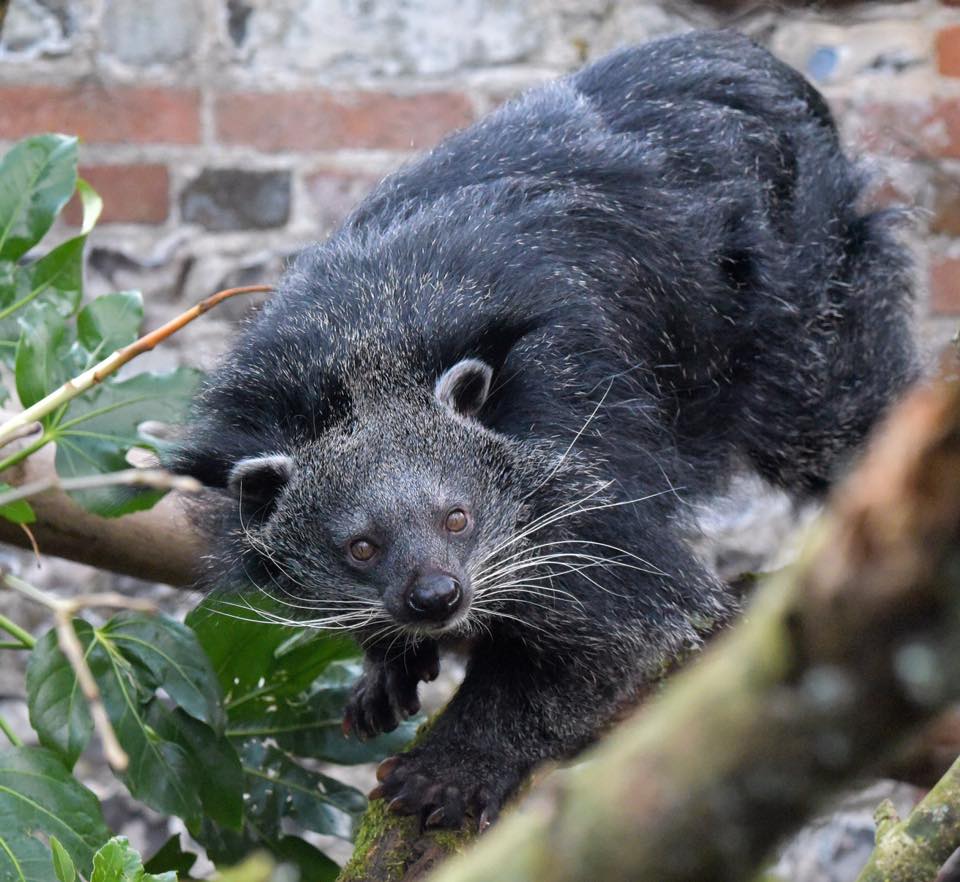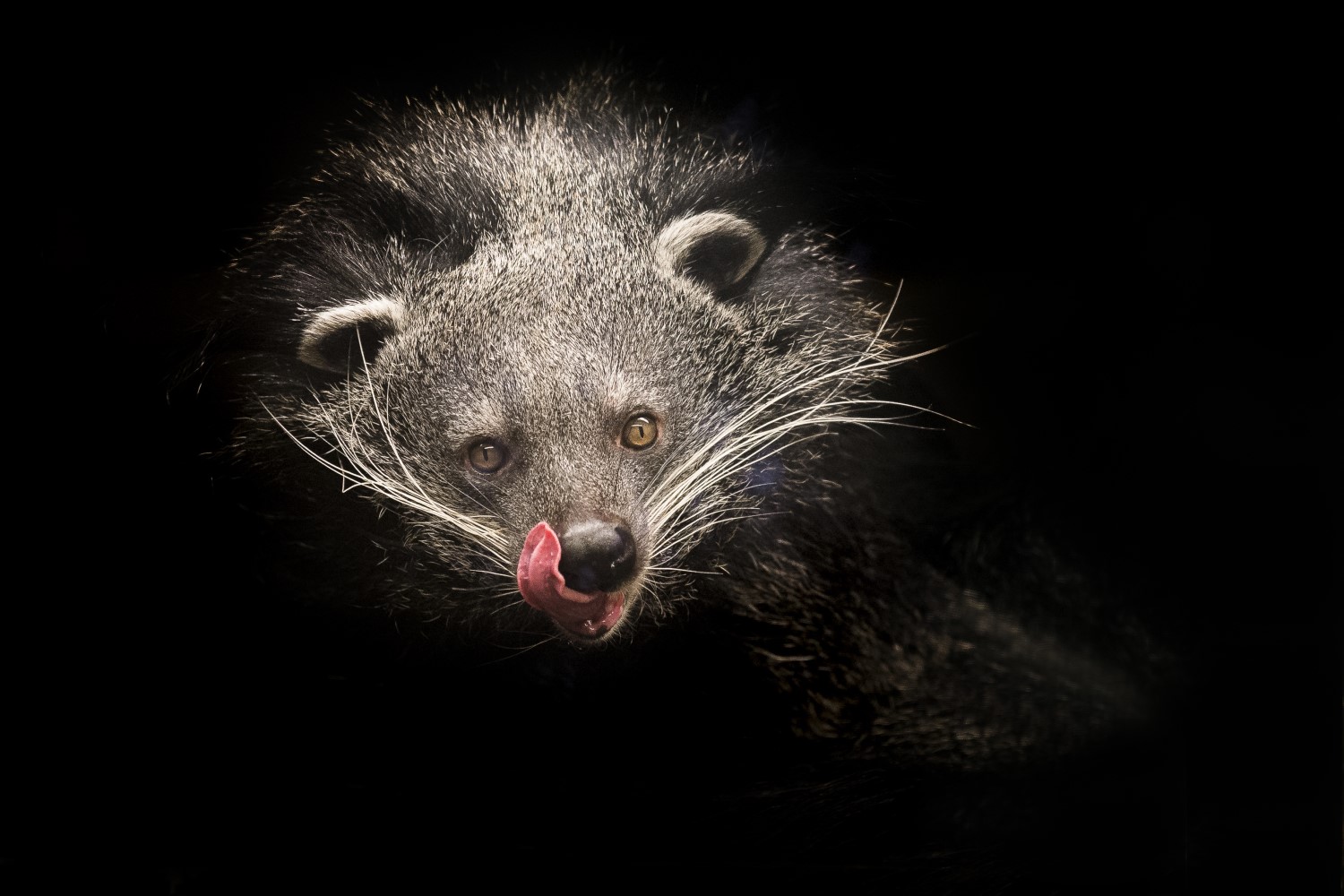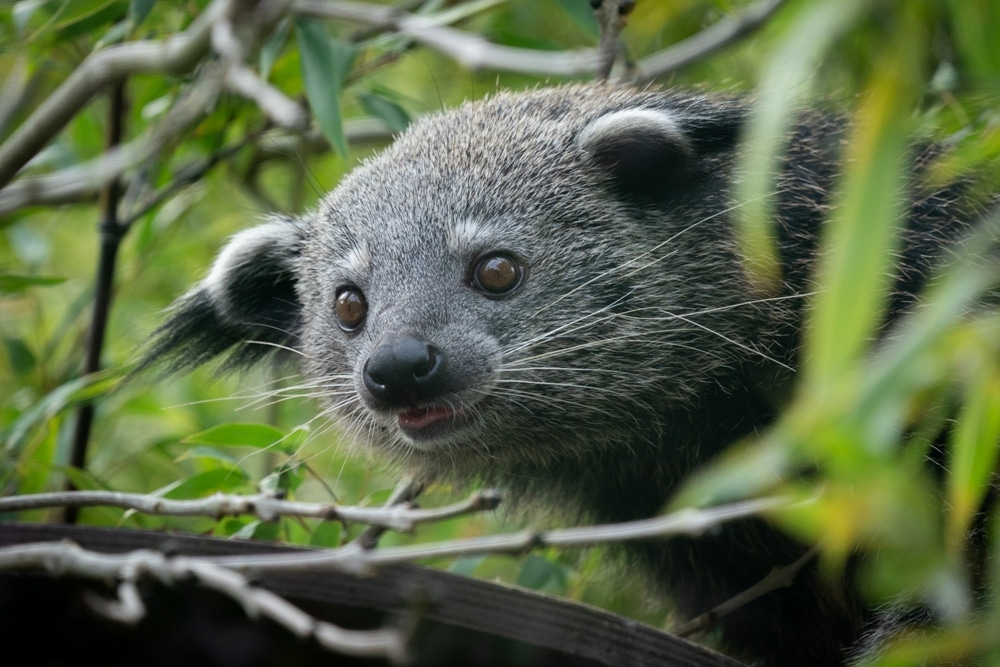Binturong
Common Name: Binturong
Scientific Name: Arctictis binturong
Binturongs spend most of their time in the trees, but because they are heavy and not very agile, they have to climb down to the ground to get from one tree to another.
Binturongs have a prehensile tail which they use for balance and to hold onto branches for support.
These fascinating creatures have glands in their tails that release a distinctive smell, often compared to buttered popcorn.
Binturongs are ‘arrhythmic’, which means there is no pattern or rhythm to their activity, so they are active at random times of the day and night.
Fast Facts
-
Status
Vulnerable
-
Size
Head-body: 61-97 cm; tail: 50-84 cm
-
Weight
9-20 kg
-
Gestation
84 to 99 days
-
Young
1-3
-
Life span
Up to 18 years
In the wild
Binturongs are considered frugivores as they mainly eat fruit. However, they are actually omnivores, so will also hunt small vertebrates, like mice and birds, as well as eating any eggs or insects they find to supplement their diet. Binturongs are thought to be the sole seed disperser for the strangler fig (Ficus altissima) as they have a unique digestive enzyme which helps activate the expelled seeds’ growth
The binturong is widespread in South and South-east Asia. It is found in Nepal, Bangladesh, north-east India, southern China and mainland and island South-east Asia, Java and also on two Philippine islands.
Binturongs live in primary forests (which haven’t been logged or managed by people) and secondary forests (which have been disturbed), and also in areas which are a mixture of forest and grassland.
Binturongs usually give birth to between one and three young after a gestation period of about 92 days. Young binturongs start to eat solid food at 6-8 weeks old.
There are few animals that will kill binturongs, because they are relatively large. Two species that are known to predate on binturongs are tigers and dholes.
The number of binturongs is thought to have declined by 30% in the last 30 years and is still decreasing. They face threats from habitat destruction for palm oil production and degradation, as well as being hunted for food, skins and the pet trade. Across its natural range the Binturong, as a species, receives varying degrees of protection. It is listed as Critically Endangered on the China Red List and has been on CITES Appendix III in India since 1989. As the Binturong has not been subject to a targeted conservation focus relatively little is known as to the effectiveness of these protection measures.


